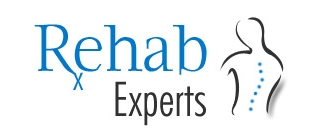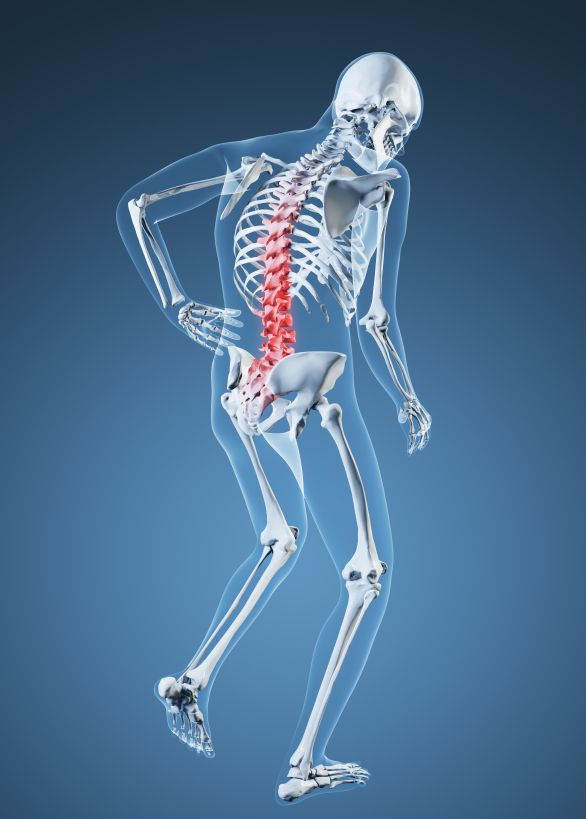Postural problems are when an individual experiences ache, discomfort or pain as a result of holding or carrying themselves incorrectly. When the body is out of line individuals walk, sit or move incorrectly which puts strain on the muscles, ligaments and bones.
Postural problems can affect individuals at any age, for example a baby may be born with a genetic condition or an abnormality in the spine such as congenital scoliosis (when the spine bends to one side) that causes postural problems.
Teenagers may develop postural problems as they become more aware and conscious of themselves and develop tendencies to hunch or slouch.
Symptoms of scoliosis often start showing in children and teenagers and can also cause them to hunch or slouch and not be able to stand straight.
Adults may develop postural problems as a result of incorrect posture at work while at a desk or computer for prolonged periods of time, while arthritis and osteoporosis suffers can also experience postural problems as joints become inflamed and swollen and bones become brittle.
Commonly postural problems develop when muscles become tight and stressed or weak and lax and the body is not correctly supported. Poor posture can also cause stress and weakness of muscles creating a cycle of problems.
What Causes Posture Problems?
Poor posture may be caused by many factors, including previous injuries, disease, poor muscle tone, and emotional stress. A sedentary lifestyle can reduce muscle tone and strength and lead to bad posture. Sore, aching feet have a negative effect on posture, too. Foot pain may mean simply that you’re choosing the wrong shoes. Or you may need special supports—orthotic devices—in your shoes. One very important factor is habit. Contrary to what some people believe, straightening up now and then isn’t enough: you need to be aware of—and to practice—other strategies to improve standing and sitting. In addition, fatigue can result in bad posture.
What If You Do Nothing?
In itself, poor posture isn’t a health problem. But it won’t improve without some effort on your part, and in the meantime it can have an adverse impact on your musculoskeletal system. If you don’t take steps to improve your posture, you may eventually limit your lung expansion—which means less energy available to your body and brain—and develop chronic muscle aches, including headaches and back pains.
Diagnosis of Postural Problems
Diagnosis of postural problems often begins when an individual, or a friend or family member recognises that a person is not standing straight or sitting upright and the individual may feel pain and discomfort.
Individuals should seek advice from their doctor about correct posture and treatment which may include being referred to a physical therapist for exercises and advice to alleviate postural problems.
The doctor may ask the individual about their profession and day to day environment and may ask them to sit and stand to assess their posture. If needed the doctor may recommend an X-ray, MRI or CT scan to further diagnose postural problems.
Conditions such as scoliosis are diagnosed usually through a physical exam of the spine and for children examining the shoulders and hips as well. This is then followed by an x-ray or MRI scan.
5 Most Common Posture Problems (and how to fix them)
Posture Problem #1: Over-Pronated Feet
Identification – As shown in the photo above, put both hands 1 inch away from each side of your foot. Straighten your ankle so that the space between each hand and your ankle is equidistant. Now naturally let your ankle and feet rest. If your foot and ankle caved inward, you have over-pronated feet.
Causes – Obesity, pregnancy, improper footwear, or repetitive pounding on a hard surface can weaken the arch leading to over-pronation and oftentimes flat feet.
Problem – Over-pronation adds stress to the foot, tightens calf muscles, and can internally rotate the knees. Over-pronation often leads to Plantar Fasciitis, Heel Spurs, Metatarsalgia, Post-tib Tendonitis and/or Bunions.
Solution – If the arch has already fallen, orthotics are the best bet. If the arch is in the process of falling, or is weak, barefoot running/walking may help strengthen the arches, but be sure to check with your doctor (orthotics may be the best bet in this case as well).
Posture Problem #2: Forward Hip Tilt
Identification – Identifying a forward tilt can be tricky, but one method is to purposely tilt your pelvis forward as far as you can, then backward as far as you can. You may realize your natural hip tilt is not far away from the exaggerated forward tilt.
Cause – Sitting too much and not stretching, which shortens the hip flexors
Problem – Forward hip tilt (aka anterior pelvic tilt) is associated with tight hip flexors, which are a group of muscles on the front of your hips that pull the knee upward. As you walk, tight hip flexors prevent the glutes (butt muscles) from firing/activating, which forces the hamstring muscles to become overworked and excessively tight. If you have tight hamstrings, the root cause may be tight hip flexors and an anterior pelvic tilt.
Solution – Stretch your hip flexors with static lunges, such as the Crescent Lunge, activate your glutes with exercises like glute bridges, and foam roll and stretch your hamstrings.
Posture Problem #3: Hunchback
Identification – Have someone take a photo of you standing sideways. If you notice that your upper back is excessively curved (greater than 40-45 degrees) as in the photo to the right, you have hunchback posture.
Cause – Sitting with bad posture, especially at an office doing computer work
Problem – Sitting hunched over a computer screen forces chest muscles to tighten, which can cause excessive curvature (kyphosis) of the upper back (thoracic spine). Postural muscles in the upper back weaken and loosen.
Solution – Relieve chest tightness with self myofascial release (use a massage ball) and stretching, while strengthening the upper back postural muscles.
Posture Problem #4: Rounded Shoulders
Identification – The “Pencil Test” involves holding a pencil (or pen) in each hand. As shown in the photo above, if the pencils are pointing straight forward with your arms comfortably at your sides, that indicates correct posture. If on the other hand the pencils are facing each other, or are rotated at an angle, then you have internally rotated shoulders.
Cause – Sitting with bad posture, especially in an office while typing, or using an imbalanced exercise routine with excessive chest pressing.
Problem – Sitting hunched over a computer screen forces chest muscles to tighten, which can internally rotate the shoulders forward. Postural muscles in the upper back weaken and loosen.
Solution – The solution is very similar to correcting hunchback posture – relieve chest tightness with self myofascial release (use a massage ball) and stretching, while strengthening the upper back postural muscles.
Posture Problem #5: Forward Head
Identification – Have someone take a photo of you standing sideways. As shown in the photo to your right, find the AC joint (bony protrusion on the side of your shoulder) and check if your ear lobe is on top of the AC joint. If your ear lobe extends in front of your AC joint, you have a forward head posture.
Cause – Sitting in an office chair hunched over while staring at a computer
Problem – Muscles in the back of the neck become tight, along with the upper trapezius and levator scapulae (upper back muscles).
Solution – First, practice proper head posture by sliding your head backward while keeping your line of sight ahead. Be sure not to tilt your head upwards as you slide your head back. Second, get a massage, or use a massage ball against your upper back, which can be very helpful to help relieve tension around your neck.
PHYSICAL THERAPY AND POSTURE
In the practice of physical therapy posture is a concept frequently used in examining people and determining if treatment, particularly for back and neck problems, has made any changes in a person. Posture is defined as “the position or bearing of the body” and refers to the overall alignment of the various body parts to each other when the person is standing in a relaxed stance.
At Rehab Experts your therapist will take a detailed history and evaluation. Your therapist will assess the strength, sensation, and circulation in the affected areas. They will gauge your balance, gait, posture, and range of motion.
Exercises for stability, balance, posture, flexibility, coordination, range of motion, and strength will be assigned to ensure that you are returned to a normal lifestyle as soon as possible.
Reference:
Therapy Web http://www.therapyweb.co.uk/problems/postural-problems#Causes
Health Communities http://www.healthcommunities.com/back-pain/posture-problems.shtml
Built Lean http://www.builtlean.com/2011/11/28/posture-problems/
The Posture Page http://www.posturepage.com/pt/

